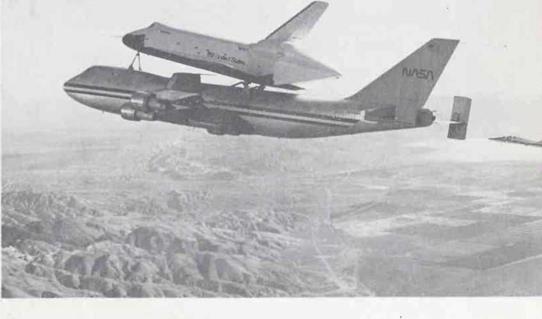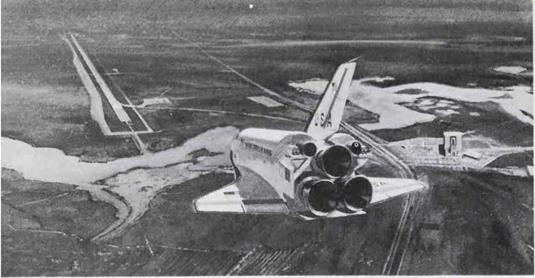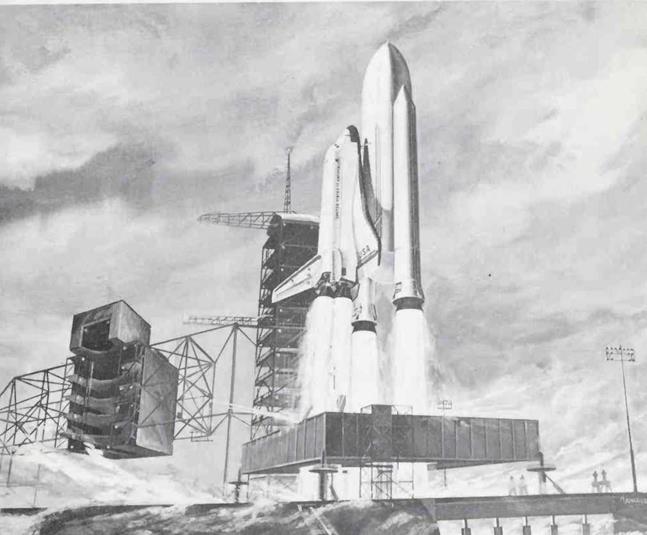SPACE SHUTTLE
The space-shuttle orbiter Enterprise left the ground for the first time on the morning of February 18, 1977. The craft shown below was riding piggyback atop a modified Boeing 747. This first flight lasted two and one-half hours. The 747 carried the shuttle to a height of 16,000 feet to test the stability of the vehicle.
 |
The shuttle is a true space-transportation system. It consists of two stages: a booster for launch from earth, and an airplane-like manned reusable orbiter for flight into space where it will conduct its missions. The orbiter is designed to be flown back to the earth and to land at a conventionally sized airstrip.

The shuttle will lift off vertically as shown in the lower picture on the opposite page. Two solid-propellant booster rockets will fire in parallel with three liquid-propelled rocket engines of the orbiter. After burnout, the solid rocket will be jettisoned and parachuted to the ocean where it will be recovered.
The orbiter is equipped with a delta wing. A crew of four is responsible for the operation of the orbiter. The or – biter’s cargo compartment is 15 feet in diameter and 60 feet long. This craft will carry payloads of 65,000 pounds into space. The payload can consist of either people or cargo.
The orbiter will make space operations less complex and less costly. It will also encourage greater participation in space flight. Scientists and engineers, for example, will be able to go into orbit to check on their experiments. In the upper picture opposite, the manipulator arm of the orbiter is extended to retrieve a satellite.
When the orbiter completes a mission in space, its pilots will fire its rockets to slow it down. Then they will direct the orbiter so it re-enters the earth’s atmosphere. The orbiter will be flown through the atmosphere and landed like an airplane on a jet-sized airstrip. Each orbiter is designed to be reused up to a hundred times.
|
|
|
|












